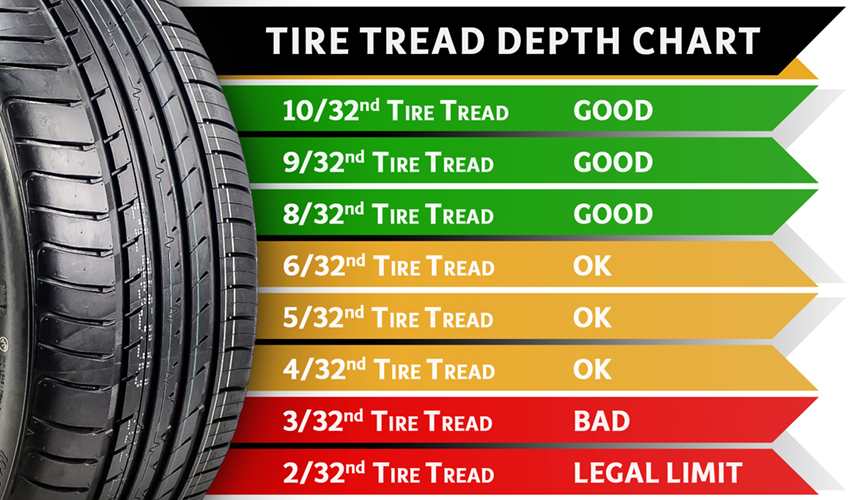Tire Talk: Navigating the Road of Tire Regulations in the USA

by AutoExpert | 29 January, 2024
Hey, let's talk tires! Have you been asking yourself if your tires are playing by the rules? Read below what you need to know about tire laws in the USA.
First things first, tires are super important. They keep you rolling, right? But there are some rules to comply with for safety and legal reasons. So, what's the lowdown on tire laws?

What's Up With Tire Laws?
Different states have their own approach to tire rules, but there are some common things:
Tread Depth: Most states have a unique view here – tires should have at least 2/32 of an inch of tread depth. Some states are a bit more specific, especially for the tires up front. Not sure how to check? Grab a penny and stick it in the tread with Lincoln's head pointing down. If you can see all of Abe's head, you need new tires.

Load Limit: Don't overload your tires. You'll find the max weight they can handle on the sidewall. If it's not there or you're confused, hit up the manufacturer for info.
Age of Tires: There's no strict expiration date, but the rule of thumb is to swap out your tires every 4-6 years from when they were made, not when you put them on your car. Drive a lot? You might need new ones sooner.
Pressure: Driving on tires that are properly pumped up isn't just smart – it's the law. It helps with gas mileage and keeps you safer on the road.

Studded Tires: Yay or Nay?
Studded tires are like winter boots for your car – great for grip on ice and snow. But they can be tough on roads, so some states limit or ban them. In New York, you're cool with studded tires from mid-October to end of April, but in Colorado, there's no time frame. Then there are states like Alabama and Texas that give studded tires a thumbs down. Every state's got its own vibe with these.
What About Tire Chains in Winter?
This is pretty similar to studded tires. Some places, like California, will let you know with signs when it's time to chain up. Oregon says you gotta have chains or traction tires in winter, especially for lighter vehicles that tow. Then there are states that leave it up to you to decide when to chain up.

FAQs for the Road
How Do I Know If My Tires Are Legal? Check these boxes: tread depth (at least 2/32 of an inch), proper inflation, don't overload, and keep an eye out for bald spots or cracks.
Bigger Tires: Can I Do That? You can go bigger, but keep it reasonable. Your car's design will tell you how big you can go. Think Jeeps with big off-road tires or sports cars with wide tires for that extra grip.
What About Worn-Out Tires? Nope, not legal. If your tires are showing their insides or falling apart, it's time for a change. And a flat tire? Definitely a no-go.
Remember, good tires mean a safer, smoother ride. Keep 'em in good shape!

















